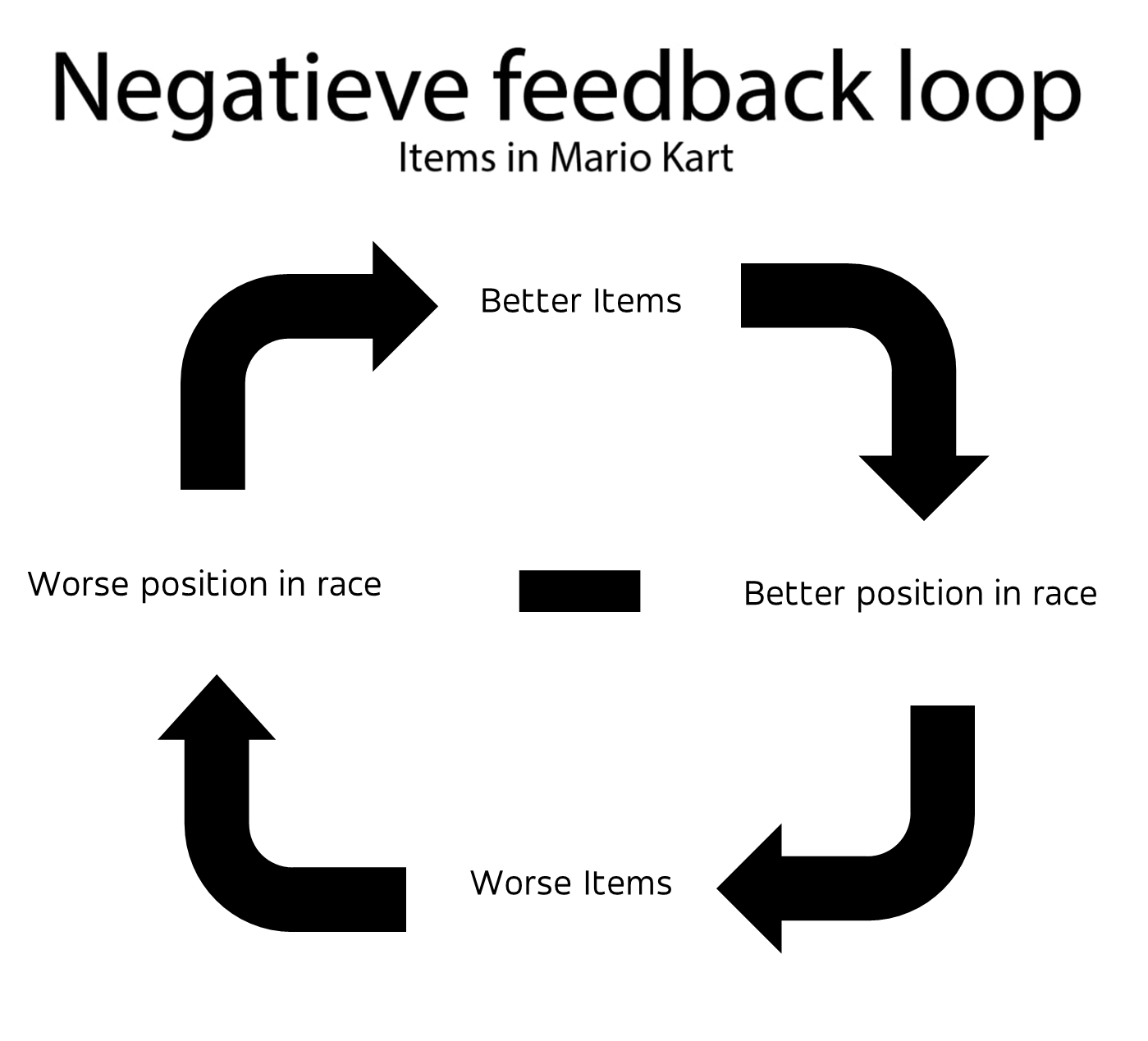Tools
Feedback Loops
Describe how a system responds to player actions, affecting the gameplay experience.
WHAT IS IT?
Feedback loops refer to the mechanisms by which player actions are acknowledged and responded to within the game.
In a positive (or reinforcing) feedback loop, a change or action is reinforced and leads to an amplification of that change, often resulting in exponential growth or a self-reinforcing cycle. Some examples:
- Weapon Upgrades
Enhanced weapon allows them to defeat enemies more easily, earning more rewards - Experience Points and Levels
Leveling up provides more capabilities or rewards, reinforcing the player’s progression.
- Winning Streaks
Completing tasks successfully grants bonuses or advantages, reinforcing a positive trend.
In a negative (or balancing) feedback loop, a change or action in the game system leads to a counteracting response that stabilizes or balances the system. Some examples:
- Health Regeneration
Regenerating health is a balancing mechanism that prevents the player from easily becoming overpowered and encourages strategic engagement.
- Diminishing Returns
Repeatedly using a particular strategy may result in diminishing returns, encouraging players to diversify their approach.
- Economic Balancing
In economic simulation games, accumulating wealth might lead to increased costs or taxes, balancing the economic system.
WHY USE THIS?
Effective game design often involves a delicate balance between positive and negative feedback loops. Too much positive feedback without counteracting forces can lead to runaway successes, while too much negative feedback can result in frustration and a lack of player agency. Skillful design aims to create a harmonious interplay between these loops, contributing to an engaging and dynamic gaming experience. You could describe you positive and negative feedback loops in a Game Design Document.
HOW DO I USE THIS?
A Feedback Loop Diagram is a simple way of showing the feedback loop you have in mind.
- Step 1: Identify Feedback Mechanics & Elements.
These elements & mechanics could be player actions, resources and it’s management, game states, combat systems, progression systems, or any other relevant factors that influence the game’s dynamics. - Step 2: Distinguish Positive and Negative Feedback.
Analyze the impact of each feedback loop on the game experience. Positive feedback loops amplify or reinforce certain behaviors or outcomes, while negative feedback loops balance or stabilize the game by counteracting excessive behaviors or outcomes. Assign a “+” sign to indicate positive feedback loops and a “-” sign to indicate negative feedback loops. - Step 3: Map Feedback Loops.
Describe the elements that play a pivotal role in the loop and show the relation between them. Use arrows to represent the flow of feedback within the game mechanics. Clearly label each element and arrow in the diagram to indicate their significance and directionality. Use concise words or phrases to describe the role of each element and the nature of the feedback loop it contributes to.
EXAMPLE

The position of the player determines the distribution of the various items and power-ups. The higher your position, the worse the items you can get, and vice versa. You have a chance to win items such as the bullet bill or golden mushroom, which makes it easy to catch up, or a blue shield, which reduces the lead of the first player. First, you’ll have a chance to win worse items, such as green shields and bananas. This ensures that the lead between the rest of the players cannot be increased by the use of items and/or power-ups.
In short, the winners are penalized and the losers are rewarded. In this way, the game is kept in balance. Hence, a negative feedback loop.
REFERENCES
Game Maker’s Toolkit. (2018, January 9). How Games Use Feedback Loops [Video]. YouTube. https://www.youtube.com/watch?v=H4kbJObhcHw&
Machinations. (n.d.). Game systems: Feedback loops and how they help craft player experiences. Machinations.io. https://machinations.io/articles/game-systems-feedback-loops-and-how-they-help-craft-player-experiences
ChatGPT
NEXT STEPS
Game Design Document, Steal Like An Artist
